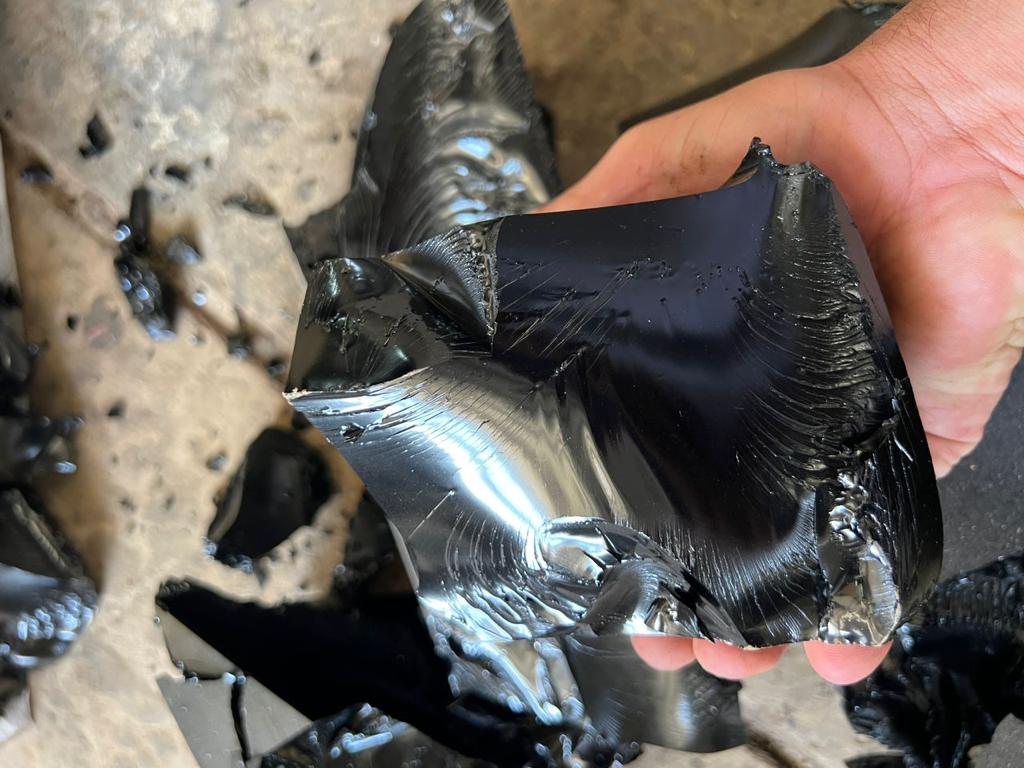
What is Oxidized Bitumen 105/15?
Oxidized Bitumen 105/15 is a Semi Solid type of pure petroleum bitumen manufactured by manipulation of hot air-blowing through an asphalt flux.
The numbers relate to the midpoint of the material’s softening point and penetration respectively. The softening point value is the degrees Centigrade measured by the Ring and Ball method as determined by ASTM D36 Standards and regulations. The penetration value is in 1/10 mm as determined by IP49 or ASTM- D5.
Oxidized asphalt 105/15 is based on petroleum bitumen which is made by blowing grade 60/70 bitumen by hot air.
Our sales team is committed who understands your requirements due to many years of experience in supplying the bitumen products.
If you are more interested in product information or need to place an order contact or inquire our Sales team.
Applications of Oxidized Bitumen 105/15
his kind of bitumen is suitable to be used in the chemical, raw material for bitumen coat, paper-pulp-board, textile processing, pavement, crack seal and repairmen, civil works, bitumen coat for piping, roofing, construction industries; sealing and insulating buildings, adhesive, construction materials additive, road construction, dust-binding, insulating and impregnating agent, isolation bitumen membrane sheet, make rubber and plastic products.
typical uses for bitumen 105/15 include roofing, pipe coating, hydraulic applications, 105/15 is mainly using in paint manufacturing and coating in hot area.
Advantages of blown bitumen 105/15
- Durability
- Flexibility
- Water Resistant
- Chemical Stability
Storage and Handling of Oxidized Bitumen 105/15
Blown asphalt 105/15 is best up to 10 years from the day it was manufactured. It is suggested for higher time of warehouse keeping to keep the bitumen under shelter and out of the rain and sun shine.
Health & safety of blown asphalt 105/35
Workers should wear protective masks, gloves, and goggles during application. The asphalt can be removed from equipment and tools with kerosene or gasoline.
Packing of Oxidized Bitumen 105/15
Blown Asphalt 115/15 in various packing, including bitumen 105/15 is available in 20 & 50 Kg Kraft Paper Bags 25 Kg Carton box & 150, 180, 200 Kg Steel Drums:
25kg carton box
25kg mold packing:
It is most expensive packing since there is mold on and with same mold we can ship out. The mold is carton and at destination you can remove the mold easily.
25Kg Polyamide bag:
It is heat resistance bag and filling directly in water to cool down fast. It is firstly use not possible to take out the Polyamide from the bitumen and then use.
25kg craft bag:
Craft bag is recycle packing and inside is special material to prevent sticking the bitumen to bag. This grade also possible to load on pallet or without pallet for customer.
Technical Data Sheet of Blown Asphalt 105/15
| Bitumen 105/15 | Test method | Unit | Specification |
| Specific gravity @25/25 °C | ASTM D70 | (Kg/m3) | 1.05 approx. |
| Penetration @ 25 °C | ASTM D5 | mm/10 | 10/20 |
| Softening point °C | ASTM D36 | °C | 100/110 |
| Loss on heating (wt) % | ASTM D6 | Wt. % | 0.2 max |
| Flashpoint °C | ASTM D92 | °C | 250 min |
| Solubility is CS2 (wt) % | ASTM D4 | Wt. % | 99.5 max |
| Spot test | A.A.S.H.O.T102 | — | Negative |

